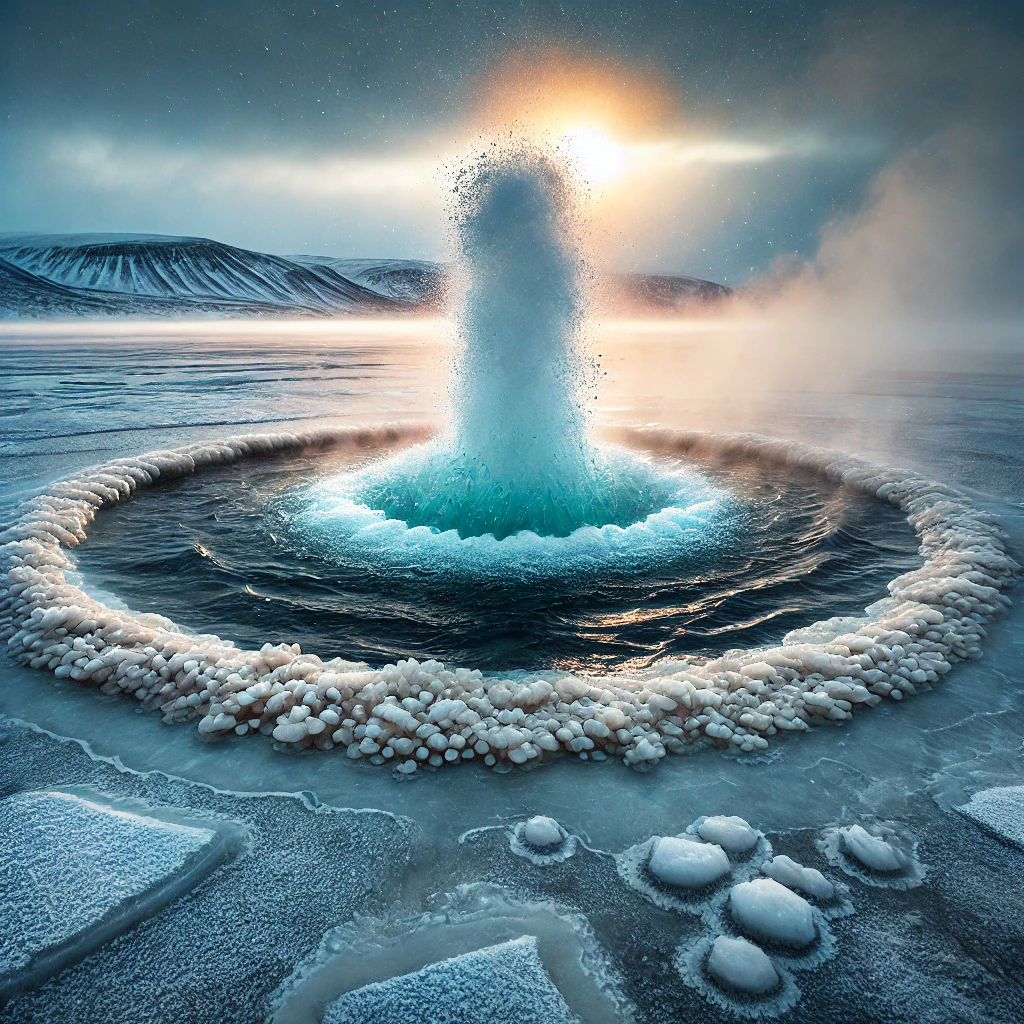
What Is a Methane Fountain?
A methane fountain is a rare geological feature where methane gas escapes from beneath the Earth’s surface, creating bubbling water jets. These fountains are typically found in oceans, lakes and permafrost regions where methane deposits exist underground. Methane can accumulate in pockets due to biological decomposition or geological activity, eventually escaping through cracks in the Earth’s surface.
Where Are Methane Fountains Found?
Methane fountains have been discovered in various locations around the world. Especially in areas rich in organic material and under permafrost conditions. Some notable locations include:
Arctic Permafrost – Methane fountains are common in Siberia and Alaska where melting permafrost releases large quantities of methane.
Oceans and Seabeds – The methane hydrate deposits on the ocean floor particularly in the East Siberian Sea, Gulf of Mexico and the North Sea often produce methane fountains.
Methane Lakes – Some lakes like Lake Kivu in Africa have high methane concentrations. Leading to natural gas seeps that create fountain-like effects.
Swamps and Wetlands – Organic decomposition in marshy regions can produce methane bubbles that occasionally form fountains.
Is a Methane Fountain Safe for Bathing?
Video Source: Eagle Nebula
Bathing in a methane fountain is not recommended due to several reasons:
1. Flammability Risk – Methane is a highly flammable gas. If an open flame or spark is introduced it could ignite explosively.
2. Oxygen Deprivation – High concentrations of methane can displace oxygen leading to dizziness, unconsciousness, or even asphyxiation in enclosed areas.
3. Health Concerns – Prolonged exposure to methane can cause nausea, headaches and respiratory issues.
4. Water Quality Issues – The presence of methane often indicates the presence of other dissolved gases or contaminants in the water, making it unsuitable for bathing.
Environmental Impact of Methane Fountains
Methane is a potent greenhouse gas with a global warming potential much higher than carbon dioxide. The release of methane from permafrost and ocean floors contributes to climate change. Scientists monitor methane fountains closely as indicators of environmental shifts. Particularly in Arctic regions where rising temperatures are accelerating permafrost melt.
Conclusion
A methane fountain is a fascinating but potentially hazardous natural phenomenon. Found in oceans, permafrost regions and methane-rich lakes. These fountains provide valuable insights into geological and climate processes. While they may seem intriguing they are not safe for bathing due to fire hazards, health risks, and environmental concerns. Ongoing research on methane fountains is crucial for understanding their impact on global warming and the Earth’s ecosystem.
For more amazing blog go to 👉 Dr Jacob Grinberg

Leave a Reply